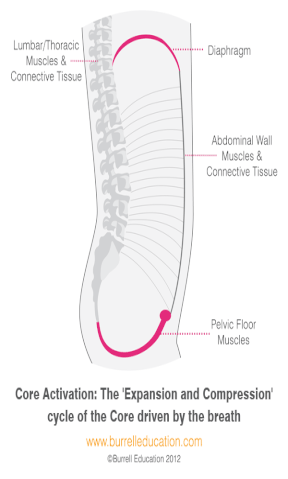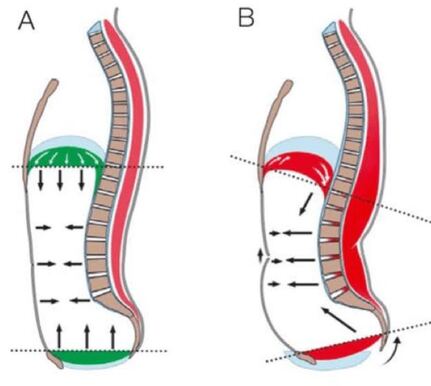Your Core and Pelvic Floor: What They Are and How They Work Together
Oct 05, 2022What do you think of when you hear the word core? I think of something that is central, vital, or the most important part of something. We can also think of the innermost layer, take fruit for example. Cutting an apple and removing the core, or coring a pineapple. You get the idea. Commonly, when people refer to their core, they touch their abs, their front abdominal wall. And that is just one piece of our innermost muscular layer.
What is your core?
It consists of four major muscle groups that work together through our movements. Beginning with the obvious is our front abdominal wall, however the deepest layer is the transverse abdominis muscle. This muscle has horizontal fibers parallel to the ground that wrap around to the back. There they meet one of the deepest layers of spinal stabilizers called the multifidus muscle or multifidi for plural. I imagine that these two muscles make an internal corset around our trunk for stability. If we think of the core as a cylinder shape similar to a soda can, we’ve described the sides. The top consists of the diaphragm, a thin flat muscle, which relatively moves up and down with our breath. The bottom of the cylinder is our pelvic floor muscles.
What is your pelvic floor?
This is a trampoline like structure, consisting of three layers of muscles at the bottom of the pelvis and our cylinder. The pelvic floor functions to stabilize the spine and pelvis, support the abdominal organs including our reproductive/urinary/bowel systems, controls sphincters that prevent leaking of urine/feces/gas, allow healthy sexual function, and circulates blood flow back up to the heart.
How do they work together?
When we breathe in, our diaphragm contracts, descending down into the abdominal cavity, which is why we may feel our belly rise or our bottom ribcage expand. As we exhale, our diaphragm returns back to its original dome shape into the thoracic cavity. Our diaphragm and pelvic floor muscles work together in functional movements like a piston. As one descends, so does the other and vice versa. This creates stability and protection to all of these muscles and structures.

Why should you care?
The pressure that we manage in our intra abdominal cavity will go to the area of weakest support. In this image, the front abdominal wall commonly begins to lengthen and without proper counterpressure, that can lead to increased stress to the tissues surrounding our linea alba where our abs attach. If this is left unchecked, this can lead to a diastasis recti (DR), hernias, pelvic floor dysfunction, low back pain, and hip instability to name a few things. Having balanced forces across the torso with our everyday movements is vital for protecting your body and keeping you moving your best. However, after periods of not training, pregnancy/postpartum, prolonged sitting postures, can leave us vulnerable for these issues listed above.

If you feel like you’re experiencing the symptoms above, difficulty getting your body to “bounce back” postpartum, leaking with running and workouts, give us a call to identify your specific imbalances and begin a path toward recovery.
In health,
Dr. Krystal Fannin PT, DPT, CMTPT, RYT-200
[1] The “pop can” core. Digital Image. J Smeaton. Apr 2019. [Accessed 2022 August 30]. Available from: https://www.depthtraining.ca/the-pop-can-core/.
[2] Breathing variations. Digital Image. S. McLaughlin. Aug 2019. [Accessed on 2022 August 30]. Available from: https://www.alignforhealth.com/self-care-for-pain/category/core%20stabilization
Let us help you figure out to live your best active life today!
Remember, Movement is Medicine!

